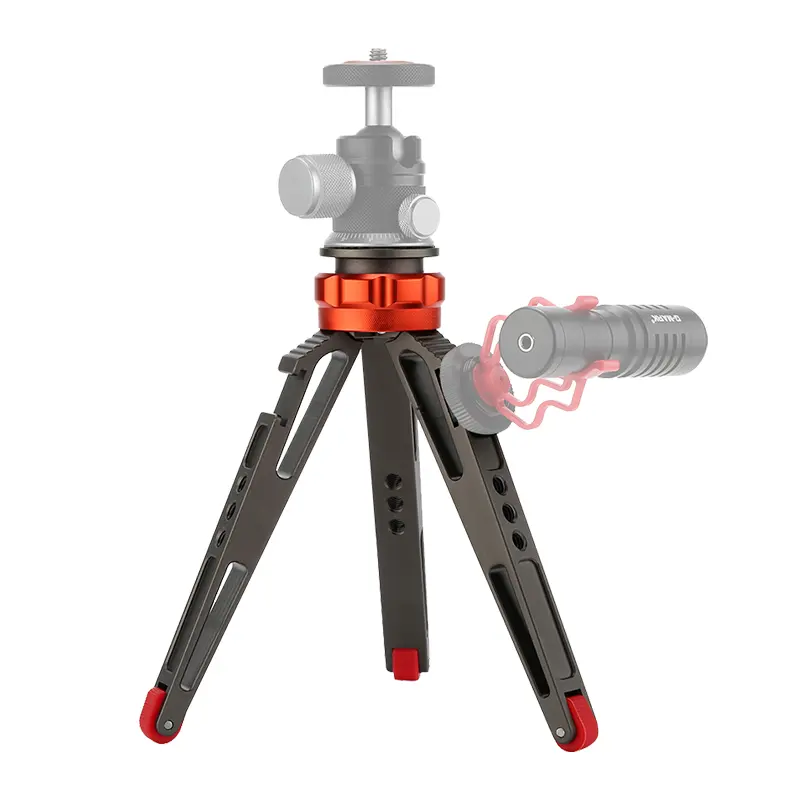

Time:2025-08-22 Views:1

Adjustable tripod adapters are versatile accessories designed to bridge the gap between various devices (such as cameras, binoculars, spotting scopes, or action cameras) and tripods, offering flexible positioning to meet diverse shooting or observation needs. Unlike fixed adapters that only support specific device sizes or angles, adjustable models feature movable components—such as telescoping clamps, rotating collars, or sliding brackets—that allow users to customize the fit and orientation, making them ideal for multi-device setups or scenarios where precise alignment is critical, such as astrophotography, wildlife observation, or professional video shooting.
The core structure of an adjustable tripod adapter typically includes a base mount, an adjustable clamping mechanism, and a locking system. The base mount is standardized to fit most tripod heads, with common interfaces like 1/4-inch-20 UNC threads (the industry standard for consumer cameras) or 3/8-inch-16 UNC threads (used for heavier equipment like professional DSLRs or tripods). This ensures compatibility with a wide range of tripods, from lightweight travel models to heavy-duty studio stands. The adjustable clamping mechanism is the defining feature: it often consists of two or more jaws lined with non-slip rubber (to prevent device scratches) that can be opened or closed via a manual screw or quick-release lever. For example, a typical adjustable adapter can accommodate device widths or diameters ranging from 25 mm (for compact action cameras like GoPros) to 80 mm (for large binoculars or small camcorders), with a clamping force of 5-10 kg to keep the device secure even during movement or vibration.
Angle adjustability is another key function of these adapters. Many models feature a 360° rotating collar between the base mount and the clamping mechanism, allowing users to swivel the device horizontally to capture panoramic shots or track moving subjects (e.g., birds in flight). Some advanced adapters also include a tilt mechanism, enabling vertical angle adjustments from 0° (horizontal) to 90° (vertical) or even 180° (upside-down), which is essential for macro photography (shooting close-ups of small objects) or low-angle shots. The locking system—usually a knob or lever—secures the adjusted position, with a torque rating of 2-5 N·m to prevent accidental movement during use.
Material selection for adjustable tripod adapters balances durability and weight. The main body is often made of aluminum alloy (6061 or 7075 grade), which offers high strength (tensile strength of 276-572 MPa) and corrosion resistance, while keeping the adapter lightweight (typically 100-300 g). The clamping jaws use reinforced nylon or ABS plastic with rubber padding to provide a secure grip without damaging the device’s exterior. For outdoor use (e.g., hiking or wildlife photography), some adapters also feature weather-resistant coatings (e.g., anodized finish on aluminum) to protect against rain, dust, or humidity.
Practical applications of adjustable tripod adapters are diverse. In astrophotography, users can attach a DSLR camera and a spotting scope to the same tripod using two adjustable adapters, aligning both devices to the same celestial object (e.g., the moon) for simultaneous shooting and observation. For vloggers or content creators, the adapter can secure a smartphone and a microphone to a tripod, allowing hands-free filming while adjusting the phone’s angle to frame the shot perfectly. In industrial settings, adjustable adapters are used to mount thermal imaging cameras or sensors on tripods, enabling technicians to inspect hard-to-reach areas (e.g., machinery components) by adjusting the camera’s position without moving the entire tripod.
Installation and use are straightforward. To set up, users first attach the adapter’s base mount to the tripod head, tightening the thread until secure. Next, they open the clamping mechanism, place the device in the jaws, and adjust the clamp width to fit snugly. they rotate or tilt the device to the desired angle and lock the position. Maintenance involves periodic checks of the locking mechanism (to ensure it remains tight) and cleaning of the rubber padding (to remove dust or debris that could reduce grip).
adjustable tripod adapters offer unmatched versatility, allowing users to connect multiple devices to a single tripod and customize their position for various shooting or observation needs. Their durable construction, wide compatibility, and flexible adjustment options make them an essential accessory for photographers, videographers, outdoor enthusiasts, and professionals across industries.
Read recommendations:
quick release plate for gimbal